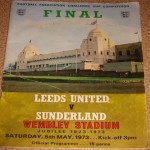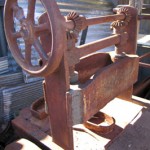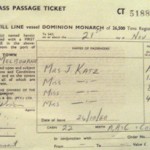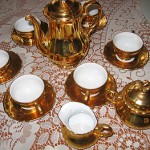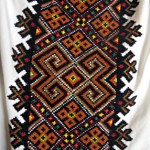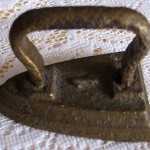Ukrainian
Yemtsy, Galizien, Ukraine
Naples, Italy in November 1949
Sydney on 5 December 1949
Bathurst for 2 weeks and Mayfield (Newcastle) for 4 years
Hamilton, Newcastle
Kitchen hand at Mayfield migrant accommodation, Newcastle
Goninans Engineering, Mayfield migrant accommodation store and nurse at Rankin Park Hospital, New Lambton Heights – all in Newcastle
My name is John (Ivan) Bojko. I was born on 25 June 1928 in a town called Yemtsy in the district of Galizien, Ukraine. It used to be a holiday resort on the river. It is not exactly like Switzerland, but it is similar. It is in the West Ukraine not far from the Hungarian, Czechoslovakian and Polish borders.
I was nine months old when my father passed away. I had two brothers, Wasil and Michael. They have both passed away. I had a sister, Rosalina, and another brother, George, but they were from my mother’s second marriage. My mother remarried when I was four years old.
In 1939, the war came and the Polish Government controlled our district. In early 1941, we were occupied by the Soviet Union. Then about June 1941, Germany invaded the Ukraine. The Germans took me in 1942. It was about one o’clock on 6 February and I was 14 years of age. This is the wallet that I had with me in the Ukraine and all the time I was in France and Germany during the war. I brought it with me to Australia.
I will always remember that Mum cooked me three or four eggs to take with me and when they were cooked, the eggs broke. When I looked on those eggs, I thought I would never see my mother again and I didn’t; it was as if my whole family had been broken apart. She was sent to Germany in 1944. My mother survived Germany and went back to the Ukraine but died before I could see her again.
The group I was with were forced by the Germans to walk 12 kilometres from Yemtsy to Galizien. The Hungarians had taken over Galizien; they were fighting together with Germany. We were put on a train to Stanislaw and stayed there for two days. Then on about 8 February, they put us on the train again and we went right through to Germany. We went to a camp in Elsass Lothringen (Alsace-Lorraine) in France. Later I was taken to a farm and I stayed for three days and I liked it. It was now about 14 February 1942.
Another farmer, Ferdanon Belin, came with his 17 year old son, George, and I went with them. It was a mixed farm with chickens, about 15 cows and two horses and a pig. I worked for about two years up on that farm. It was very nice and the farmers were nice.
I was issued with this German passport in 1943 and it is a passport for an Auslander (foreigner).
On 26 June 1944, the Germans took me from the farm to dig trenches for the Panzer soldiers. Then in September, there was a big attack in Saarbrucken when I was working up there on the railway. There was a big hole where the bomb had exploded. We worked until ten o’clock at night [repairing the line] so the train could go right through to the Front.
The group I was with, four Ukraine and four Polish, then walked about 100 kilometres by foot to Daun near Luxembourg at the Belgium border. I went to the Rhine after that and came back to the farm with the Belin family. I stayed there until June 1945 when I went to the Trier camp in Germany where I lived with a family. There were four big blocks in the camp. One of them was where they had the [movies] and dancing and [an] exercise room with a wooden floor. I went to the school there and did a beermeisters certificate.
One time I went up to a farm at Trier and got a pig and brought it back to the camp. It was a big pig and everyone was laughing at me, a young fellow with a pig. They castrated him and afterwards he followed me like a dog. The butcher weighed him and he was 220 kilos when we killed him.
In about November 1949 I went to the Australian High Commission at Lembork near the border with Holland. I was approved by the Australian Commission to come to Australia.
I wanted to come here to Australia because I expected a better life and future. I travelled by myself and was on a two year working contract.
I went from Germany by train to Napoli then came to Sydney by ship. That was sometime in November 1949 when I was 21. The ship was called the Halen Prince and had been sunk by torpedoes and brought back up again.
This trunk came across on the ship. Everyone was laughing at me because of what I had in the trunk. I had a French racing bike. I brought a German radio and two American blankets, two doonas, an American sleeping bag and a mosquito net. I also brought two pillows.
Where I slept on the ship there were 150 people. On the top floor, there were the ladies. The men and the ladies were separated but mothers were with the children. When we came from Napoli, we went to Port Said. At Aden, we had to wait half a day because the ships were delayed going through the Suez Canal. From Aden, we came to Perth. At Perth, the old engine was broken down and we had half a day there. From Perth, we went straightaway to Sydney.
We got to Sydney Harbour on 5 December 1949. When I went to see about coming to Australia other people said that Australian people lived in the jungle. But, when I saw it, it looked just like Europe.
On 6 December, we came into Bathurst migrant camp. We travelled by train to Bathurst. I was in BC [barracks] where all the single men were. I was here for just one day [when] news [broke] of a Soviet revolution and I was thankful [I was here]. When I came to Australia, I helped my Ukrainian family with money and parcels.
On 19 December 1949, I travelled by train to Broadmeadow in Newcastle. From Broadmeadow the bus took me to the migrant hostel at Mayfield West. They gave me two shillings just before Christmas but I did not go to work then. What hit me first when I came to Mayfield was that, on the Sunday, there were picture shows on but the hotels were all closed and there were no sports.
I started work at Goninans Engineering on 3 January 1950. I worked there for one year. I then worked at the Mayfield migrant hostel in the store until 1954. I lived in the hostel too.
When I was young in the Ukraine, we were taught to do embroidery and I knitted socks and things. I started doing tapestry here in Australia, about 1953. This is some of my work but I have not done it for some time now.
I moved to Eva Street, Hamilton on 18 May 1954. At that same time, I went to work at Rankin Park Hospital, New Lambton Heights in Newcastle. I was doing nursing. I was there for three or four years to learn from the tutor sister and then to gain my nursing certificate. I also did some interpreting at the hospital as I speak many languages. When there were Ukrainian, Polish, French, Italian or Yugoslav [patients] they would say, “Where is John? We need translations”. One time I remember that this Macedonian fellow would not take his tablets. I came to him and said, “Hello, how are you?” in his language and then he took the tablet.
In November 1961, I went to Maroubra in Sydney to visit some friends who also came from the West Ukraine. I met my wife Emilia Geraszek there. She was born in the Ukraine and in 1945, her parents sent her to Brody in Poland because her town was being destroyed. She came to Australia on 7 October 1961 on the SS Roma.
We were married on 8 July 1962. We stayed in Hamilton and had our daughter, Elizabeth, who was born on 11 April 1963 at the Royal Newcastle Hospital (RNH). Then in 1964 on 2 June, our son, Gregory, was born at the RNH. On 5 March 1964, we bought our home in Jesmond. It was a brand new home. It was a weatherboard home with a tiled roof. It was not very big; only about ten squares.
I continued working at Rankin Park and in 1974, my wife started working at BHP. She worked there for four years. It was shift work and it was too hard to go to work in the night time. She then went to work at the RNH and worked there for 14 years. I worked at the Rankin Park Hospital for 51 years and was presented with a medallion by the then Premier Bob Carr. I finished working there on 1 July 2005. I did enjoy working there. When you work so long in one place, everybody there are just like family.
I met a Mrs Newton who was a physiotherapist in the Rankin Park Hospital. Her husband was in electrical engineering at the BHP. They adopted me as though they were my grandparents. She was always there for me. At Christmas and Easter, I went to her place. We went to her funeral in Hamilton and they said she had an adopted son and everybody looked when they said, ‘John Bojko’. She was a very wonderful lady to me.
In 1991, I went back to the Ukraine with a Ukrainian group. I flew with them from Sydney to Moscow. From Moscow, we flew to Lviv in the Ukraine. We got there very late the next day, but [people] were still waiting with the traditional Ukrainian custom of bread and salt.
I wrote to my sister and brother that I was coming to the Ukraine so, when I was in Lviv, I rang them and told them I was at the Sputnik Hotel. When I got back from a walk with my friends I saw four people waiting and I thought maybe it was my family. My sister cried and my brother and stepbrothers and my stepbrother’s sons. But it was funny, you know, I never cried. We had breakfast together and then we went to my nephew’s place and we stayed there together for two days.
We then went to my old hometown Yemtsy for five days. On that trip, I also went back to the railway station from where I had been sent to Germany. I just sat there and a lady came to me and said, “Do you want something?” She offered me a cup of tea or coffee and I told her that in 1942 in January they took me from this railway station to Germany. It did break my heart; it was very hard to go back there.
I went through about ten countries [on that trip] but the best life is here in Australia. I went back again in 1994 with my wife, Emilia.
I am very pleased I came to Australia. I have met some very good Australian people. I have my own home and my two children have their own home. I have five grandchildren. Emilia, my wife, is a wonderful mother and a good wife and is very happy and very glad that we have our children and our home. My daughter is a radiologist and my son is a civil engineer. Education is very important. I did not have it because World War Two broke out.
When I buy something I want to buy Australian because we live in Australia and we have to support it.
I was very elated about arriving in Australia; a new country, a new life and a new beginning and I am very thankful.



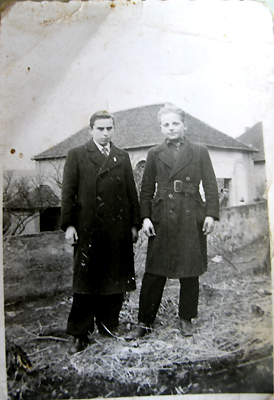
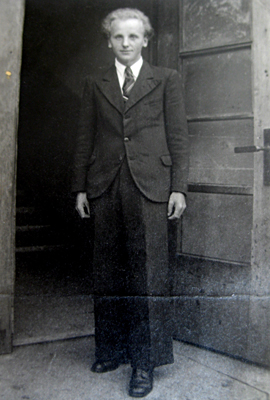


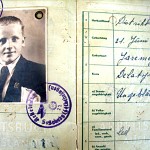
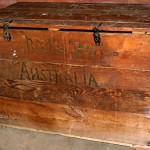
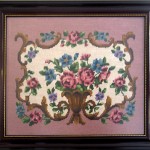
!["This is the wallet I had with me from the age of 14. I had [it] with me in the Ukraine and all the time I was in France and Germany during the [Second World] war."](../../../cms/wp-content/uploads/2009/09/bojko-wallet-150x150.jpg)
